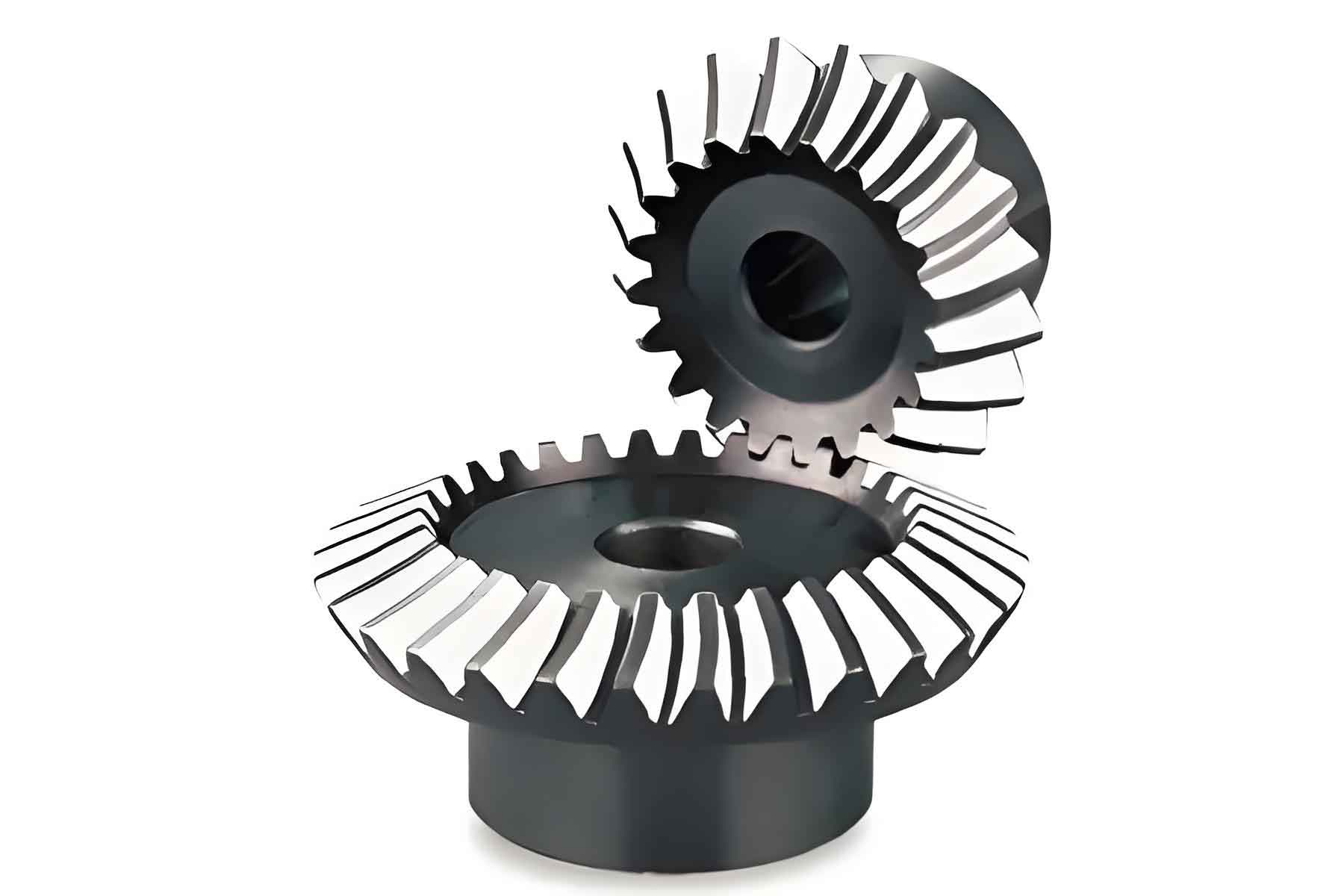Bevel gear is integral components in various mechanical systems, facilitating the transmission of power between intersecting shafts. These gears are commonly used in automotive differentials, industrial machinery, and aerospace applications. Despite their robust design, bevel gear is susceptible to various types of failures that can compromise the efficiency and reliability of the entire system. This article delves into the common failures in bevel gear systems, their causes, and the preventive measures that can be implemented to enhance the longevity and performance of these systems.

Common Failures in Bevel Gear Systems
- Wear and Tear
- Description: Wear and tear are gradual deteriorations of gear surfaces due to continuous operation.
- Causes: Inadequate lubrication, abrasive particles, and misalignment.
- Symptoms: Surface pitting, scoring, and increased backlash.
- Tooth Breakage
- Description: The fracture of gear teeth.
- Causes: Excessive load, manufacturing defects, and material fatigue.
- Symptoms: Sudden failure, noise, and loss of power transmission.
- Pitting
- Description: Formation of small cavities or pits on the gear surface.
- Causes: High contact stress, improper lubrication, and material defects.
- Symptoms: Rough gear surface, noise, and vibration.
- Spalling
- Description: Flaking or peeling of the gear surface.
- Causes: High cyclic stress, thermal stress, and material fatigue.
- Symptoms: Large flakes on gear surface, noise, and vibration.
- Scuffing
- Description: Severe adhesion wear characterized by the transfer of material between contacting surfaces.
- Causes: Insufficient lubrication, high sliding velocity, and surface roughness.
- Symptoms: Surface roughness, increased temperature, and noise.
- Corrosion
- Description: Chemical or electrochemical reaction leading to the degradation of the gear material.
- Causes: Exposure to corrosive environments, poor lubrication, and material selection.
- Symptoms: Rust formation, pitting, and weakened gear teeth.
Causes of Failures in Bevel Gear Systems
| Cause | Description |
|---|---|
| Inadequate Lubrication | Insufficient or improper lubrication can lead to increased friction and wear. |
| Misalignment | Misalignment of gears can cause uneven load distribution, leading to premature failure. |
| Overloading | Excessive loads can exceed the material strength, causing tooth breakage and surface damage. |
| Material Defects | Defects in the gear material, such as inclusions or improper heat treatment, can cause failure. |
| Contaminants | Presence of abrasive particles in the lubricant can cause wear and surface damage. |
| Poor Maintenance | Lack of regular inspection and maintenance can allow minor issues to escalate into failures. |
Preventive Measures for Bevel Gear Systems
- Proper Lubrication
- Use high-quality lubricants specifically designed for bevel gear.
- Implement an appropriate lubrication schedule to ensure continuous protection.
- Regularly monitor lubricant condition and replace it as needed.
- Accurate Alignment
- Ensure precise alignment during installation to avoid uneven load distribution.
- Use alignment tools and techniques to maintain correct positioning of bevel gear.
- Load Management
- Design systems to operate within the load-carrying capacity of the bevel gear.
- Implement overload protection mechanisms to prevent excessive loads.
- Material Selection and Quality Control
- Use high-quality materials with suitable properties for the operating conditions.
- Implement stringent quality control measures during manufacturing to detect and eliminate defects.
- Contamination Control
- Use filters and seals to prevent the entry of contaminants into the lubrication system.
- Regularly inspect and clean the system to remove any accumulated debris.
- Regular Maintenance and Inspection
- Develop and adhere to a comprehensive maintenance schedule.
- Conduct regular inspections to identify and address early signs of wear and damage.
Case Study: Preventive Measures in Bevel Gear Systems
Case Study 1: Automotive Differential
An automotive manufacturer experienced frequent bevel gear failures in their vehicle differentials. The root cause analysis revealed that inadequate lubrication and misalignment were the primary contributors. The following preventive measures were implemented:
- Enhanced Lubrication System: The manufacturer switched to a high-performance synthetic lubricant with superior anti-wear properties. Additionally, they installed an automated lubrication system to ensure continuous and consistent lubrication.
- Precision Alignment Tools: Advanced alignment tools were introduced to ensure accurate positioning of the bevel gear during assembly. Regular alignment checks were also incorporated into the maintenance schedule.
- Improved Quality Control: The material quality of the bevel gear was enhanced by implementing more rigorous quality control measures during manufacturing. This included advanced testing techniques to detect material defects.
Results:
The implementation of these preventive measures led to a significant reduction in bevel gear failures, resulting in improved vehicle reliability and customer satisfaction.
Conclusion
Failure analysis and prevention in bevel gear systems are crucial for ensuring the reliability and efficiency of mechanical systems. By understanding the common types of failures and their causes, and by implementing effective preventive measures, it is possible to significantly enhance the performance and longevity of bevel gear systems. Regular maintenance, proper lubrication, accurate alignment, load management, and stringent quality control are key strategies that can help in achieving this goal. By adopting these practices, industries can minimize downtime, reduce repair costs, and maintain optimal operational performance.
4o
